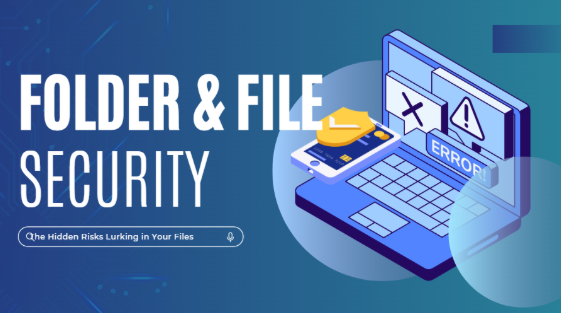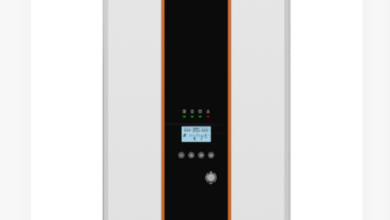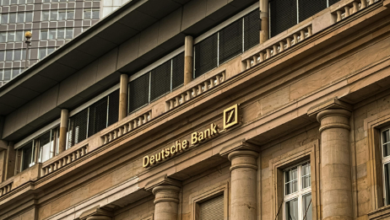Folder & File Security: The Hidden Risks Lurking in Your Files

It started with a simple mistake. A junior HR professional emailed a batch of employee records to his personal account so he could work from home. The result? He was fired—and his company faced a serious data exposure incident. Stories like this aren’t just one-offs. They highlight a sobering truth: our everyday habits with folders and files can invite big trouble. If you think data breaches are only caused by elite hackers breaking into networks, think again. Many leaks begin with something as mundane as a misconfigured folder or a misdirected email.
Everyday Actions, Serious Consequences
Consider this: 65% of employees admit to bypassing security measures to make their work lives easier. Maybe you’ve forwarded a work document to your personal email, reused a simple password, or kept sensitive files on an unencrypted USB drive. These shortcuts are usually well-intentioned (who hasn’t felt the crunch of a deadline?), but they open the door wide to data leaks. In fact, insiders—whether careless or malicious—are now a leading cause of breaches, with 83% of organizations reporting an insider incident in the past year. It might be an office manager sharing the wrong cloud link or an engineer saving proprietary code on a public drive. Small lapses add up to big risks.
And it’s not just internal mishaps. Even tech giants slip up. Microsoft, for example, accidentally leaked customers’ contact information (names, emails, phone numbers, etc.) by leaving a server publicly accessible. If a company with world-class security can make that mistake, imagine what can happen in a less protected environment.
Read Also: AI in Education: How Technology Is Shaping Future Classrooms
Big Breaches Start Small
Some of the headline data breaches in recent years didn’t involve sophisticated cyber-espionage at all—they came from unsecured files and folders. In 2023, a major outsourcing firm exposed councils’ and residents’ data due to an open cloud storage bucket, and a global consulting company leaked passport and address details from a misconfigured file repository. In each case, the result was a total loss of confidentiality and a scramble to do damage control. One analysis found that 21% of publicly exposed cloud storage buckets contain sensitive data like personal IDs, financial info, and internal documents. In plain terms: that “shared folder” you assume is private could be a treasure trove for anyone on the internet if you’re not careful.
Even old-school mistakes still happen. An employee loses an unencrypted flash drive or laptop, and suddenly private data is out in the wild. (Heathrow Airport was fined £120,000 after an employee lost a USB stick with sensitive info—ouch.) The cost of these missteps goes beyond embarrassment. Companies face customer backlash, regulatory fines, and legal battles, while individuals can face identity theft or career consequences. Busy professionals often underestimate this until it’s too late.
Why You Should Care (Deeply)
If you’re a small business owner or an individual, you might think, “I don’t have anything that hackers want.” But consider the client lists, financial records, or personal documents on your drive. For a small company, a leak of customer data can be an existential crisis. (Around 60% of small businesses close within six months of a cyberattack, according to some reports.) And for you personally, imagine your tax returns, medical files, or intimate photos exposed – it’s not just about money, it’s about privacy and peace of mind.
Folder and file security isn’t a “tech problem” reserved for IT departments – it’s something that affects everyone with data they’d rather not share with the world. It’s as fundamental as locking the front door to your house. You wouldn’t leave that door wide open overnight; yet in the digital world, we often leave our “file cabinet” unlocked without realizing it.
The takeaway is clear: the files and folders we handle every day are gateways to sensitive information. Overlooking their security can cost careers and companies alike. The good news? These scenarios are largely preventable. By recognizing the risks lurking in our everyday habits, we can start making simple changes to avoid becoming the next cautionary tale. In the next article, we’ll shift from scare stories to solutions—exploring practical steps to protect your data without derailing your daily work.
What does “folder and file security” actually mean?
It refers to the practices and tools used to protect the data you store in files and folders (whether on your computer, phone, or the cloud). This includes controlling who can access or edit a file, using passwords or encryption to prevent unauthorized viewing, and generally keeping your documents safe from prying eyes or accidental exposure. In short, it’s making sure that only the people who should access a file can do so – and that your sensitive information doesn’t leak out.
I’m just an individual (or run a small business). Why should I care about file security?
Because breaches aren’t just a “big company” problem. If you lose personal documents or a client’s data, the impact can be devastating. Think about personal photos, banking info, or your customers’ addresses – in the wrong hands, these can lead to identity theft, fraud, or a shattered reputation. Small businesses, in particular, have a harder time recovering from data loss. Keeping your files secure is part of protecting your livelihood and privacy. Plus, many cyberattacks are opportunistic – if you present an easy target, attackers won’t care how small you are.
Isn’t my cloud storage (Google Drive, Dropbox, etc.) already secure?
Yes and no. Reputable cloud services do invest heavily in security – they encrypt data and have guards against hackers. However, how you use those services is the crucial factor. For example, if you set a Google Drive folder to “Anyone with the link can view,” it’s essentially open to anyone who stumbles on that link. Or if your Dropbox password is weak and reused elsewhere, a hacker could log in and see everything. Cloud platforms give you tools (access controls, links that expire, two-factor authentication), but it’s on you to use them properly. The platform is secure, but a publicly shared file or a leaked password can undermine that security in a heartbeat.
Do I need to be tech-savvy to secure my files and folders?
Not at all. You don’t need a computer science degree to take basic protective steps. Modern operating systems and apps have one-click security features. For instance, setting up a password or PIN on your laptop or phone, turning on encryption (Windows’ BitLocker or Mac’s FileVault can be enabled in a few steps), or simply using built-in options like “Protect Document” in Microsoft Office. Even something as simple as regularly updating your software helps keep you safe. It’s more about consistency than complexity – small habits like these go a long way. And if something sounds intimidating (like “encryption”), know that it’s largely automatic under the hood; you just need to flip the right switch.
What’s the most common mistake that leads to file breaches?
The biggest mistake is assuming “someone else took care of it.” In practice, one very common error is using overly simple or default settings – like keeping the default “public” setting on a shared folder or not adding a password to a sensitive document. Another is convenience trumping caution: emailing a confidential file to the wrong person, or using the same easy password for every account (so one leak opens all your files). Humans are often the weak link. Fortunately, that also means we have the power to strengthen that link by being just a bit more careful: double-check who you’re sharing with, use unique passwords, and don’t procrastinate on those security steps you know you should take. None of us are perfect, but being aware of these pitfalls is the first step to avoiding them.



